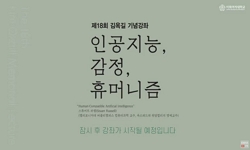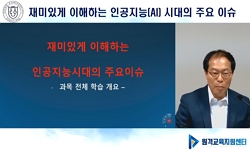<Blade Runner>, first released in 1982, is a science-fiction film directed by Ridley Scott. In Octorber 2017, <Blade Runner 2049>, which was directed by Denis Villeneuve, was released. The two films were set in the post-industrial wastelan...
http://chineseinput.net/에서 pinyin(병음)방식으로 중국어를 변환할 수 있습니다.
변환된 중국어를 복사하여 사용하시면 됩니다.
- 中文 을 입력하시려면 zhongwen을 입력하시고 space를누르시면됩니다.
- 北京 을 입력하시려면 beijing을 입력하시고 space를 누르시면 됩니다.

인간의 조건을 위한 영화 <블레이드 러너> 엔터테인먼트적 기호 연구 = A Study of the Semiotic Definition of Humanity as Entertainment in the Film <Blade Runner>
한글로보기https://www.riss.kr/link?id=A104502611
- 저자
- 발행기관
- 학술지명
- 권호사항
-
발행연도
2017
-
작성언어
Korean
-
주제어
인간의 조건 ; 엔터테인먼트 ; <Blade Runner 2049> ; 인공지능 ; 공감 ; 시그니피앙 ; 시그니피에 ; 리플리카 ; 리플리컨트 ; Human conditions ; Entertainment ; <Blade Runner 2049> ; Artificial Intelligence ; Empathy ; Signifiant Signifie ; Replica ; Replicant
-
등재정보
KCI등재
-
자료형태
학술저널
-
수록면
253-266(14쪽)
-
KCI 피인용횟수
2
- DOI식별코드
- 제공처
-
0
상세조회 -
0
다운로드
부가정보
다국어 초록 (Multilingual Abstract)
<Blade Runner>, first released in 1982, is a science-fiction film directed by Ridley Scott. In Octorber 2017, <Blade Runner 2049>, which was directed by Denis Villeneuve, was released. The two films were set in the post-industrial wasteland of Los Angeles and Sandiego in 2019 and 2049 as a result of negative aspects of technology-oriented society. Replicants who are made for the advanced human life system can be superior to human’s labour power and make judgment like humans. Both films kept us to consider the meaning of human beings in the age of technology-oriented society where both humans and AI robots co-exit. This article will examine significances of both <Blade Runner 2019> and <Blade Runner 2049> in the history of science-fiction films, and then will discuss the conditions of humans and the roles of entertainment industries in the future society rapidly changed by AI techonolgies. In the films, modern technology is depicted as a human arrogance in the film, and the anxiety of human being about fear and lack of affection is set in a whole of visual expressions. Both of the <Blade Runner 2019> and <Blade Runner 2049> reflect the ability of imagination and creativity of human beings as a dominant power even in the technology-oriented future. Along with it, this study suggests to consider the roles of entertainment industries in order to increase the conditions of human beings in the future.
참고문헌 (Reference)
1 강익모, "동북아시아의 일본군‘위안부’ 역사인식과 예술적 표현방법 연구" 한국엔터테인먼트산업학회 10 (10): 97-113, 2016
2 박지희, "공감(empathy)과 동정(sympathy) - 두 개념 대한 비교 고찰" 한국수사학회 (24) : 91-116, 2015
3 강익모, "공간이 주는 기억의 재생 : 건축학 개론을 중심으로" 한국엔터테인먼트산업학회 6 (6): 21-32, 2012
4 Masaki Kobayashi, "人間の條件, 1959-1961)3 episodes"
5 Jacques Lacan, "Écritis" Sallim 2007
6 Jin Hong Choi, "[Between Her and A.I.] Greetings of A.I. and the Future-Exchanges of Emotions and Acknowledgements of Personality"
7 Stephen Bates, "What’s Entertainment? Notes Toward a Definition" 33 (33): 1-20, 2010
8 James Cameron, "Terminator"
9 "La Condition Humaine by Andre Malraux"
10 Soon-Gyu Kang, "Inhuman Human and Human Clone as More than Human: Blade Runner" 4 (4): 133-151, 2011
1 강익모, "동북아시아의 일본군‘위안부’ 역사인식과 예술적 표현방법 연구" 한국엔터테인먼트산업학회 10 (10): 97-113, 2016
2 박지희, "공감(empathy)과 동정(sympathy) - 두 개념 대한 비교 고찰" 한국수사학회 (24) : 91-116, 2015
3 강익모, "공간이 주는 기억의 재생 : 건축학 개론을 중심으로" 한국엔터테인먼트산업학회 6 (6): 21-32, 2012
4 Masaki Kobayashi, "人間の條件, 1959-1961)3 episodes"
5 Jacques Lacan, "Écritis" Sallim 2007
6 Jin Hong Choi, "[Between Her and A.I.] Greetings of A.I. and the Future-Exchanges of Emotions and Acknowledgements of Personality"
7 Stephen Bates, "What’s Entertainment? Notes Toward a Definition" 33 (33): 1-20, 2010
8 James Cameron, "Terminator"
9 "La Condition Humaine by Andre Malraux"
10 Soon-Gyu Kang, "Inhuman Human and Human Clone as More than Human: Blade Runner" 4 (4): 133-151, 2011
11 Myung Hee Hong, "Imagination and Gaston Bachelard" Sallim 2005
12 Yun Jong Lee, "End-of-the-Planet-Earth Science Fiction Films in Hollywood: Dystopian Spatio-Temporality in Blade Runner and Interstellar" 57 : 67-100, 2015
13 Neill Blomkamp, "Chappie"
14 Kyoung Shin Kim, "A Cross Cultural Study n Sci-Fi Visual of
15 Gok Sook. Seo, "
16 강익모, "3D영상시대 기호소재 연구 j-<아바타>, <토르>를 중심으로" 한국엔터테인먼트산업학회 5 (5): 1-14, 2011
동일학술지(권/호) 다른 논문
-
- 한국엔터테인먼트산업학회
- 이옥기
- 2017
- KCI등재
-
- 한국엔터테인먼트산업학회
- 육정학
- 2017
- KCI등재
-
방송산업의 특수성에 관한 연구: 지역방송의 매출과 편성을 중심으로
- 한국엔터테인먼트산업학회
- 이승현
- 2017
- KCI등재
-
한국 전통춤 테마파크 체험학습 활동의 효용가치: 조건부가치평가법(CVM)의 적용
- 한국엔터테인먼트산업학회
- 유지영
- 2017
- KCI등재
분석정보
인용정보 인용지수 설명보기
학술지 이력
| 연월일 | 이력구분 | 이력상세 | 등재구분 |
|---|---|---|---|
| 2022 | 평가예정 | 재인증평가 신청대상 (재인증) | |
| 2019-01-01 | 평가 | 등재학술지 유지 (계속평가) |  |
| 2016-01-01 | 평가 | 등재학술지 선정 (계속평가) |  |
| 2015-01-01 | 평가 | 등재후보학술지 유지 (계속평가) |  |
| 2013-01-01 | 평가 | 등재후보학술지 유지 (기타) |  |
| 2012-01-01 | 평가 | 등재후보 1차 PASS (등재후보1차) |  |
| 2010-01-01 | 평가 | 등재후보학술지 선정 (신규평가) |  |
학술지 인용정보
| 기준연도 | WOS-KCI 통합IF(2년) | KCIF(2년) | KCIF(3년) |
|---|---|---|---|
| 2016 | 0.79 | 0.79 | 0.72 |
| KCIF(4년) | KCIF(5년) | 중심성지수(3년) | 즉시성지수 |
| 0.7 | 0.67 | 0.781 | 0.27 |





 KCI
KCI DBpia
DBpia






